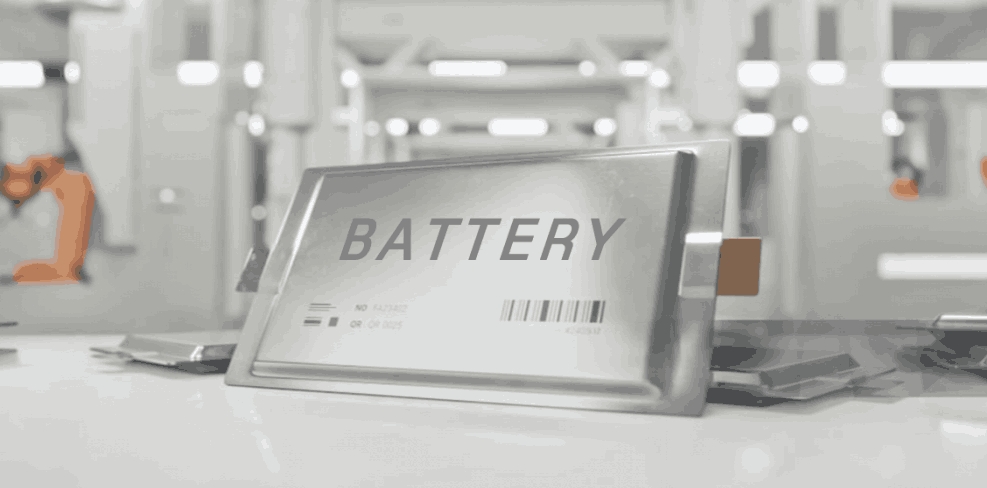A lithium polymer battery (LiPo) is a type of rechargeable lithium battery that features a soft aluminum-plastic film casing and uses a semi-solid polymer electrolyte. Unlike traditional hard-shell batteries, LiPo batteries are flexible and lightweight — they can be made ultra-thin and molded into various shapes. You’ll often find them in smartphones and drones where compact, lightweight power is essential.
Positive and Negative Electrodes: The positive electrode stores lithium ions (often made of lithium cobalt oxide or lithium iron phosphate), while the negative electrode, usually graphite, releases and receives lithium ions.
Polymer Separator: Acts like a breathable cling film that allows lithium ions to pass while blocking electrons — preventing internal short circuits.
Tabs (Battery Terminals): The "electrical connectors" — the positive tab is typically a silver-colored aluminum strip, and the negative is a nickel strip used to connect to external circuits.
Aluminum-Plastic Laminate Film: A triple-layer protective shell (nylon + aluminum + polyethylene) that is waterproof, leak-resistant, and flexible without deforming.
Nominal Voltage: Typically 3.7V; fully charged at around 4.2V; cutoff voltage for discharge is about 3.0V (refer to the spec sheet). Discharging below this is considered over-discharge, which can cause irreversible damage.
Storage Voltage: If unused for over a month, it’s best to store the battery at around 50% State of Charge (SOC), typically 3.7V–3.85V (check with the manufacturer for optimal value).
Safety Tips: Never charge beyond 4.2V — this can cause swelling, thermal runaway, or even fire/explosion. Likewise, avoid discharging below 3.0V to preserve battery life.
Main Advantages:
Lightweight, Thin, Flexible: Up to 40% lighter than traditional batteries; can be as thin as 0.5mm — like a credit card that fits into smartwatches or tablets.
High Capacity, Long Endurance: Stores 10%-15% more energy than equivalent-sized batteries — more flight time for drones.
Fast Charging: Supports 2C fast charging — up to 80% charge in just 30 minutes, perfect when you're in a rush.
Notable Drawbacks:
Lots of Fakes: Counterfeit or poor-quality LiPo batteries may be disguised as genuine but tend to swell or fail over time. Always buy from reputable brands.
Lack of Standard Sizes: Comes in various shapes and sizes — always measure your battery compartment and consult the supplier to ensure compatibility.
Phones/Tablets: Ultra-thin cells make devices sleeker and extend battery life.
Drones/RC Cars: High-discharge batteries deliver bursts of power for fast takeoff and acceleration.
Smartwatches/Fitness Bands: Slim, flexible batteries sit comfortably against the skin all day.
Portable Power Banks: LiPo batteries make them lighter and easier to carry around.
Capacity (mAh): Higher numbers mean longer runtime — for example, a 2000mAh battery stores twice the energy of a 1000mAh one.
Discharge Rate (C Rating): For drones, choose at least 25C; for general electronics, 10C is sufficient. Higher C = stronger output but also higher price.
Size and Shape: Measure the battery bay (length, width, thickness) and find a custom-fit solution from the manufacturer to make the most of your space.
Avoid Full Charges: For daily use, avoid charging to 100% SOC — 80%-90% is better for long-term health.
Keep Cool: Don’t leave batteries in hot cars during summer. If the battery feels hot while charging, pause and wait for it to cool before continuing.
Proper Storage for Long-Term: Store at around 3.8V, place in a plastic bag, and keep in a cool, dry place. Recharge every 3 months to avoid deep discharge.
Criteria | Authentic LiPo Battery | Counterfeit or Inferior Battery |
Tab Material | Positive tab: aluminum (silver-white) / Negative tab: nickel (silvery-white) | Both tabs are copper (reddish-purple) |
Weight | 40% lighter than 18650 battery of the same capacity | Weight is close to or the same as a standard 18650 battery |
Charging Behavior | Charges at 2C to 80% in 30 minutes with no noticeable heat | Heats up noticeably within 10 minutes, voltage fluctuates abnormally |
Labeling & Packaging | Clear labeling of voltage / capacity / certification marks | Fuzzy or missing labels, no manufacturer info, or false parameters |
Step 1: Inspect the tab color and welding quality
Genuine aluminum tabs have smooth, burr-free welds. In contrast, counterfeit batteries often show visible welding defects or burrs, and both the positive and negative tabs may appear as reddish-purple copper strips.
Step 2: Use a multimeter to check resting voltage
After fully charging and letting the battery rest for 1 hour, a genuine battery shouldretain a voltage of ≥4.1V (for example, if charged to 4.2V, it should remain above 4.1V). Counterfeit batteries may drop sharply to below 3.9V, indicating poor quality or fake chemistry.
Custom Shapes Available
Whether your device requires square, irregular (e.g., round or curved), ultra-thin, or uniquely sized batteries, YLP offers precision-customized battery solutions tailored to your exact dimensions — improving internal space utilization by up to 30%.
Safe and Reliable
Every YLP battery undergoes strict safety testing, including but not limited to short-circuit, compression, puncture, drop, and overcharge/discharge protection tests. Our batteries comply with UN38.3 international air transport safety standards and hold certifications such as CE and RoHS, ensuring peace of mind and reliable performance.
Fast Turnaround for Your Needs
We offer 7-day prototyping and 21-day mass production. Whether you need micro batteries for wearables (as small as 100mAh) or high-power packs for drones, YLP provides dependable solutions to power your innovations.
Let a professional battery solution fit perfectly into every one of your devices!
